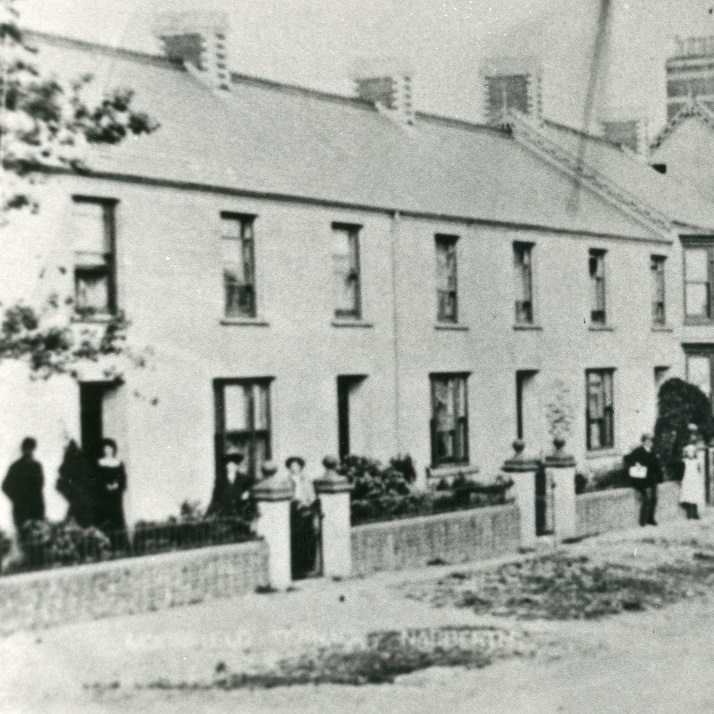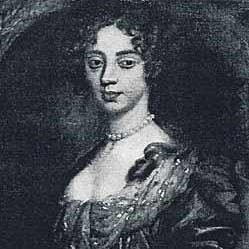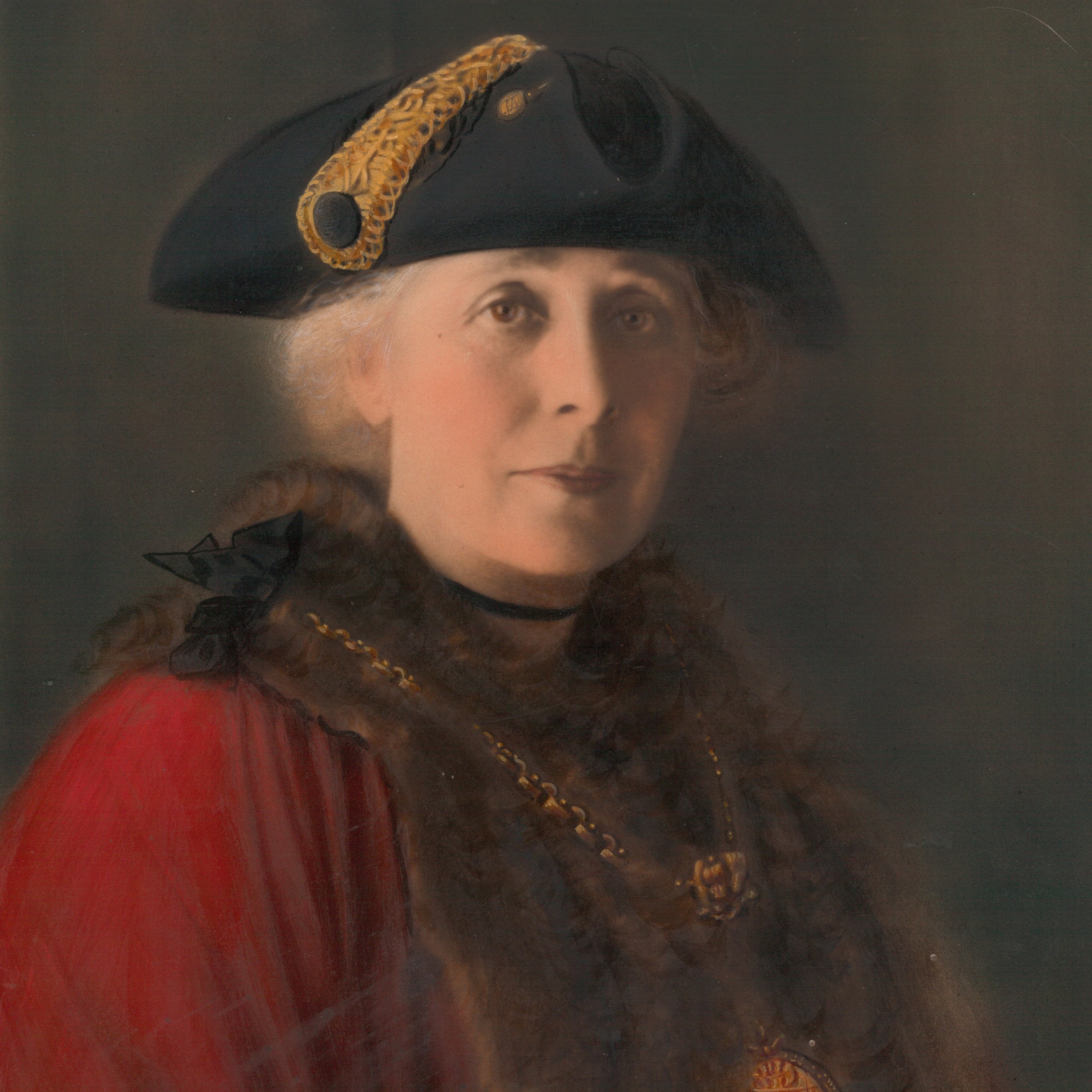Mary Arundel
Mary Morgans was born in Llandeilo, Carmarthenshire in 1797. She married Henry Arundel, a saddler in Sheep Street, Narberth, on 21st November 1819.
In December 1846 she was reported, in the ‘Blue Books’ on the ‘State of Education in Wales’, to be running a school; held in the now demolished Island House, Market Square, Narberth, Pembrokeshire. It was described as taking place in an ‘underground kitchen’ with ‘school furniture consist(ing) of one square table, one long table and three benches, and the kitchen contained besides many articles for domestic use’.
Despite less than ideal conditions for learning, Mrs. Arundel’s school was described as ‘extremely clean and well-lighted by a large window’. Government inspector, William Morris, placed repeated emphasis on the standard of hygiene at the school, with the children described as ‘clean and neat’ and the ‘copy books…well-written and kept exceedingly clean’.
As with many ‘Dame’ schools from the period, Mrs. Arundel’s school delivered educational provision for working-class children before the education act was passed in 1870. Reference to how many of ‘the best scholars were said to be absent, it being market day, when they wanted to help their parents’ reveals some of the difficulties experienced by both teachers and pupils in achieving this.
The ‘Blue Books’ report appears to hold little regard for her efforts, dispassionately commenting ‘Mrs. Arundel is ignorant of Welsh, nor is it the mother tongue of her pupils, who are mostly very young’. Reference to the quality of education makes similarly little allowance for background or circumstances, describing how the pupils ‘read imperfectly’ and ‘could give few answers from what they read, but appeared to have been well-taught in Dr. Watts’ Catechism of Scriptural History’. Of the girls’ work, Mr. Morris comments: ‘the samplers appeared to be worked very neatly and with great care’.
At a time when education for all was neither compulsory nor freely available, Mary Arundel’s legacy is one of selfless determination. In her care, working-class children found opportunity, despite challenging circumstances and other responsibilities, in an environment that was scrupulously maintained. ‘…Her object in keeping (her school) was not gain, but for her own amusement and the benefit of poor children…’, many of whom she taught without pay. She died, in Haverfordwest, on June 14th 1855.
Ganed Mary Morgans yn Llandeilo, Sir Gaerfyrddin, yn 1797. Priododd â Henry Arundel, cyfrwywr yn Sheep Street, Arberth, ar 21 Tachwedd 1819.
Ym mis Rhagfyr 1846 cofnodwyd yn y “Llyfrau Gleision” ar “Gyflwr Addysg yng Nghymru” ei bod yn rhedeg ysgol; a gynhaliwyd yn adeilad Island House, sydd bellach wedi ei ddymchwel, ar Sgwâr y Farchnad, Arberth, Sir Benfro. Yn ôl y cofnod, disgrifir yr ysgol fel un a oedd yn cael ei chynnal mewn cegin o dan y ddaear gyda ‘school furniture consist(ing) of one square table, one long table and three benches, and the kitchen contained besides many articles for domestic use’.
Er gwaethaf yr amodau llai na delfrydol ar gyfer dysgu, disgrifiwyd ysgol Mrs. Arundel fel ysgol ‘extremely clean and well-lighted by a large window’. Pwysleisiodd arolygwr y Llywodraeth, William Morris, dro ar ôl tro, safon yr hylendid yn yr ysgol, gyda’r plant yn cael eu disgrifio fel plant glân a thaclus a’r llyfrau wedi eu disgrifio fel a ganlyn: ‘copy books…well-written and kept exceedingly clean’.
Fel gyda llawer o ysgolion ‘hen ferched’ y cyfnod, roedd ysgol Mrs. Arundel yn darparu addysg ar gyfer plant dosbarth gweithiol cyn pasio’r ddeddf addysg ym 1870. Dengys cyfeiriad at sut yr oedd llawer o’r ‘ysgolorion gorau yn absennol, gan ei bod yn ddiwrnod marchnad, pan yr oeddent eisiau helpu eu rhieni’ rai o’r anawsterau a brofwyd gan athrawon a disgyblion wrth geisio cyflawni hyn.
Ymddengys mai prin yw’r parch sydd gan y ‘Llyfrau Gleision’ at ei hymdrechion, a cheir y sylwad dideimlad canlynol: ‘Mrs. Arundel is ignorant of Welsh, nor is it the mother tongue of her pupils, who are mostly very young’. Yn yr un modd, mae’r cyfeiriad at ansawdd yr addysg yn rhoi bach iawn o le i gefndir neu amgylchiadau, gan ddisgrifio sut y mae’r disgyblion yn darllen yn amherffaith ac yn gallu rhoi ambell ateb prin yn unig o’r hyn a ddarllenwyd ganddynt, er eu bod wedi eu haddysgu’n dda yn llyfr Dr. Watts, Catechism of Scriptural History. Wrth sôn am waith y merched, mae Mr. Morris yn dweud: ‘the samplers appeared to be worked very neatly and with great care’.
Ar adeg pan nad oedd addysg i bawb yn orfodol nac ychwaith ar gael yn rhad ac am ddim, mae’r hyn a wnaeth Mary Arundel yn dangos penderfyniad anhunanol. Yn ei gofal hi, cafodd plant dosbarth gweithiol gyfle, er gwaethaf amgylchiadau heriol a chyfrifoldebau eraill, mewn amgylchedd a gynhaliwyd yn ofalus. ‘…Her object in keeping (her school) was not gain, but for her own amusement and the benefit of poor children…’, ac addysgai lawer ohonynt heb dâl. Bu farw, yn Hwlffordd, ar 14 Mehefin 1855.






